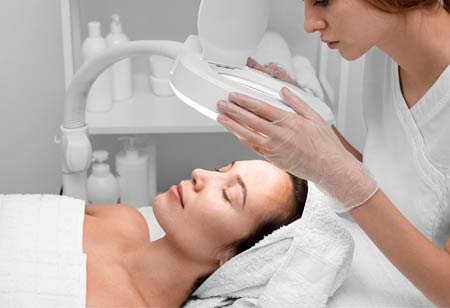Thank you for Subscribing to Healthcare Business Review Weekly Brief
Be first to read the latest tech news, Industry Leader's Insights, and CIO interviews of medium and large enterprises exclusively from Healthcare Business Review
Shaping Beauty: The Evolving Cosmetic Surgery Landscape in APAC

By
Healthcare Business Review | Monday, June 09, 2025
Stay ahead of the industry with exclusive feature stories on the top companies, expert insights and the latest news delivered straight to your inbox. Subscribe today.
Urbanization, increasing wealth, and greater exposure to global beauty standards via social media have contributed to the popularity of aesthetic procedures. Countries like South Korea, Japan, China, Thailand, and India are at the forefront of this growth, with South Korea widely recognized as a leader in cosmetic surgery innovation and volume. As the demand for aesthetic enhancement continues to surge, cosmetic surgery in the APAC region is rapidly transforming, supported by innovations such as AI, minimally invasive procedures, and personalized care approaches.
Medical tourism has played a critical role, with international patients drawn to APAC countries due to affordable pricing, high-quality services, and skilled professionals. Robotic-assisted surgeries enter the cosmetic field, increasing precision and reducing recovery times. AI’s role in post-procedure monitoring is gaining traction, with tools capable of tracking healing progress, alerting clinicians to complications, and optimizing follow-up care.
AI Implementation and Tech Trends
AI has begun to reshape the landscape by offering enhanced precision, predictive outcomes, and personalized treatment planning. AI-driven facial analysis tools can now assess symmetry, age indicators, and ideal enhancement zones, helping surgeons plan procedures with improved accuracy and realism. The technologies reduce human error and increase patient confidence by simulating postoperative results. Some clinics use AI algorithms to compare thousands of previous cases and outcomes to provide data-backed recommendations tailored to individual facial structures and preferences.
The region is trending toward non-invasive and minimally invasive treatments such as Botox, fillers, thread lifts, and laser procedures. The methods appeal to a younger demographic seeking subtle changes without downtime or surgical risks. Another notable trend is integrating augmented reality (AR) and 3D imaging technologies, which help practitioners and patients visualize the expected outcomes before surgery. It has improved communication and satisfaction while reducing postoperative regret.
Chatbots and AI-powered virtual assistants help guide patients through consultation processes, pre-surgery preparation, and post-surgery recovery, improving overall patient experience. In the background, AI assists with supply chain management, staffing optimization, and risk assessment, making operations more efficient. The market impact of these innovations is profound. Enhanced accuracy and transparency have helped reduce surgical errors and malpractice claims, increasing patient trust and satisfaction. Clinics that adopt AI technologies and modern treatment methods report higher patient retention and growth rates.
Applications Across APAC and the Transformational Impact
Cosmetic surgery procedures are widely applied in facial reshaping (rhinoplasty, eyelid surgery, jaw reduction), breast augmentation, liposuction, body contouring, and skin rejuvenation. In many APAC cultures, facial features such as double eyelids, high nose bridges, and V-shaped jawlines are desirable, prompting a high demand for these surgeries. In South Korea, blepharoplasty and rhinoplasty are the most commonly performed procedures. In countries like Thailand and India, body contouring and gender affirmation surgeries are gaining prominence.
In China, the rise of a beauty-conscious middle class has led to a booming domestic market, with AI-powered mobile apps offering cosmetic consultations, surgery suggestions, and virtual try-ons. Japan, known for its conservative beauty ideals, is seeing a gradual but consistent increase in cosmetic procedures, particularly among older adults seeking age-reversal treatments. AI applications extend beyond clinical precision to marketing and customer engagement. Clinics utilize AI to analyze patient preferences, track treatment trends, and optimize advertising strategies.
The integration of AI has facilitated the entry of smaller, tech-savvy players into the market, challenging legacy providers and broadening consumer choice. Medical tourism continues to amplify the regional impact, especially in countries offering comprehensive packages that include travel, accommodation, and cosmetic procedures. Governments like Thailand and Malaysia actively promote their nations as medical tourism destinations, providing regulatory support and infrastructure to accommodate international clients. The resulting economic contribution from cosmetic surgery extends beyond healthcare to hospitality, transportation, and local commerce.
Solutions and Market Needs Moving Forward
AI systems can monitor compliance data, flag suspicious trends, and even assist in credential verification processes. Cost barriers and socio-economic disparities are other significant issues. While urban populations increasingly access cosmetic procedures, rural and underserved communities remain excluded from such services. Outreach programs, mobile clinics, and tiered pricing models may help bridge the accessibility gap. Teleconsultations powered by AI and mobile apps can connect potential patients in remote areas with top-tier specialists, democratizing access to expert opinions.
Using AI and digital imaging involves collecting and storing sensitive biometric data. Medical tools’ single-use plastics and clinics’ high energy consumption contribute to the industry’s environmental footprint. Green certifications, eco-friendly surgical supplies, and AI-driven energy management systems can help clinics align with global sustainability goals. The APAC cosmetic surgery market needs continuous innovation, policy support, and patient education. Future developments could include AI-powered robots for microsurgeries, fully virtual consultations with AR overlays, and real-time intraoperative decision-support systems.
The cosmetic surgery market in APAC is undergoing a remarkable transformation, shaped by cultural openness, AI innovations, and rising demand for personalized beauty solutions. While regulation, access, and ethics challenges persist, proactive solutions rooted in technology and policy reform pave the way for a more inclusive, safe, and dynamic industry. The region’s ability to balance high-tech precision with human-centered care will ultimately define its success in shaping the future of global cosmetic surgery.






